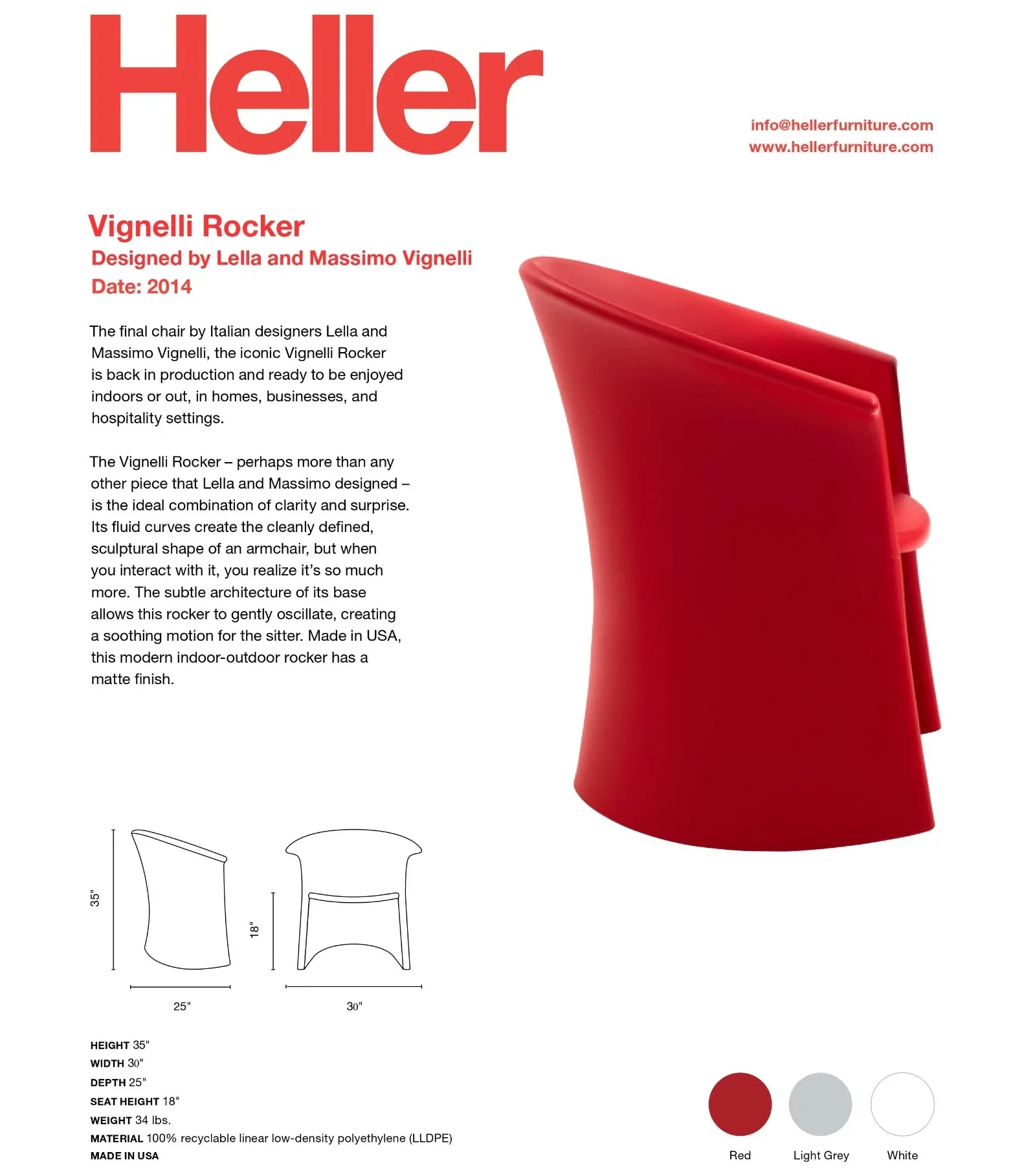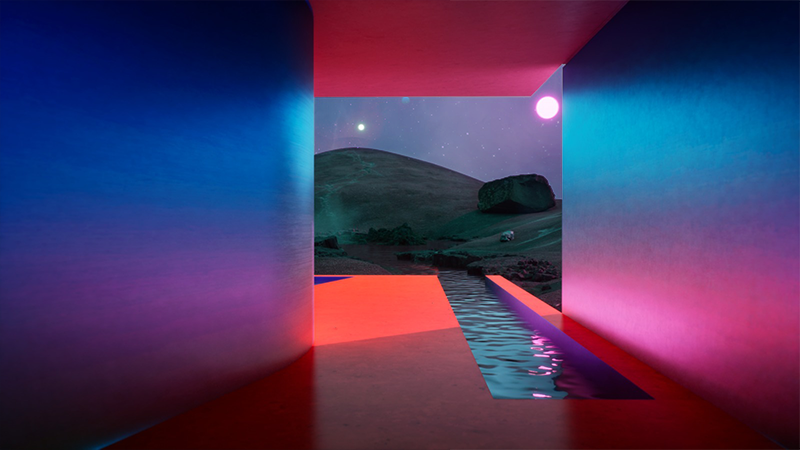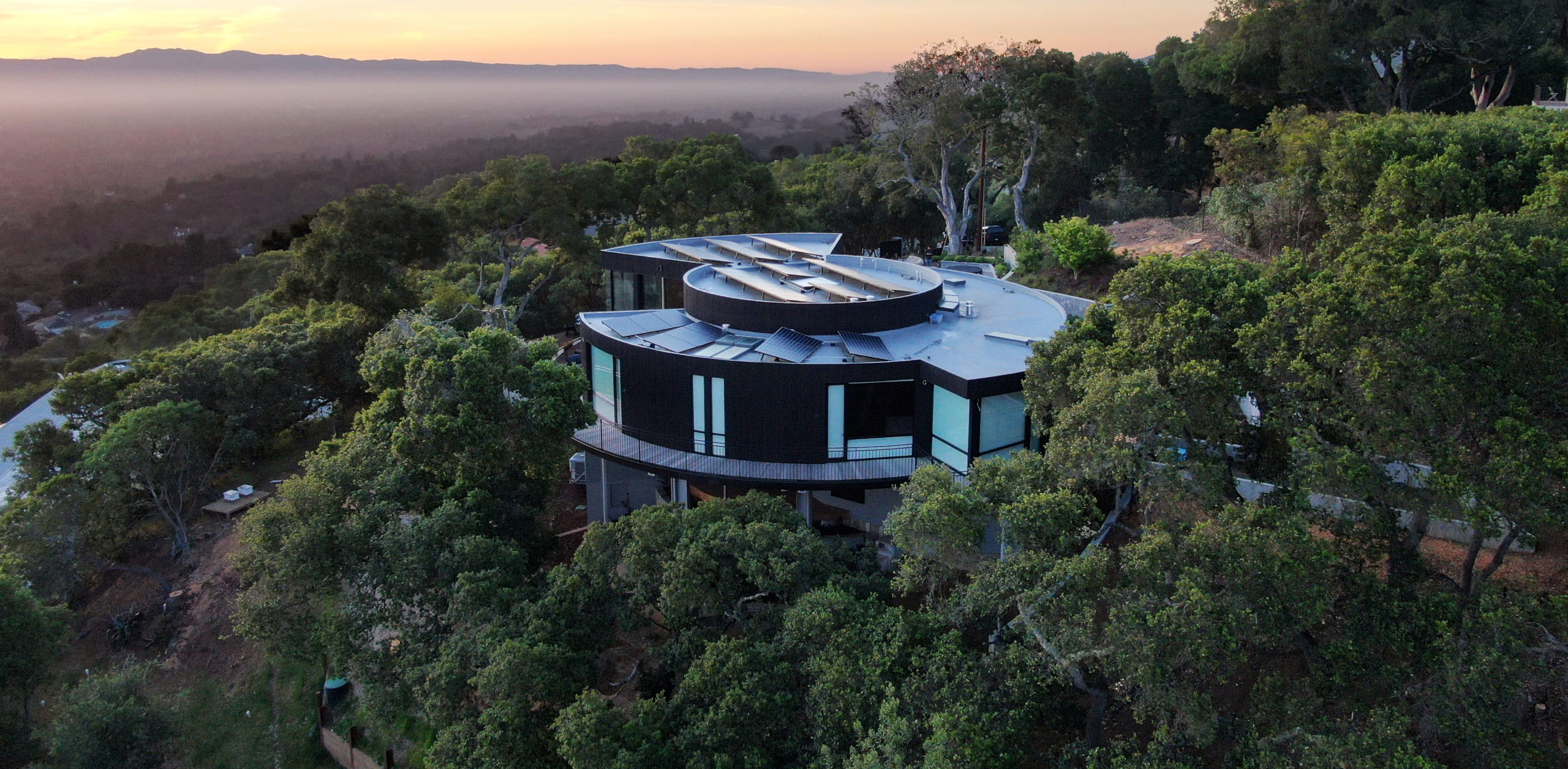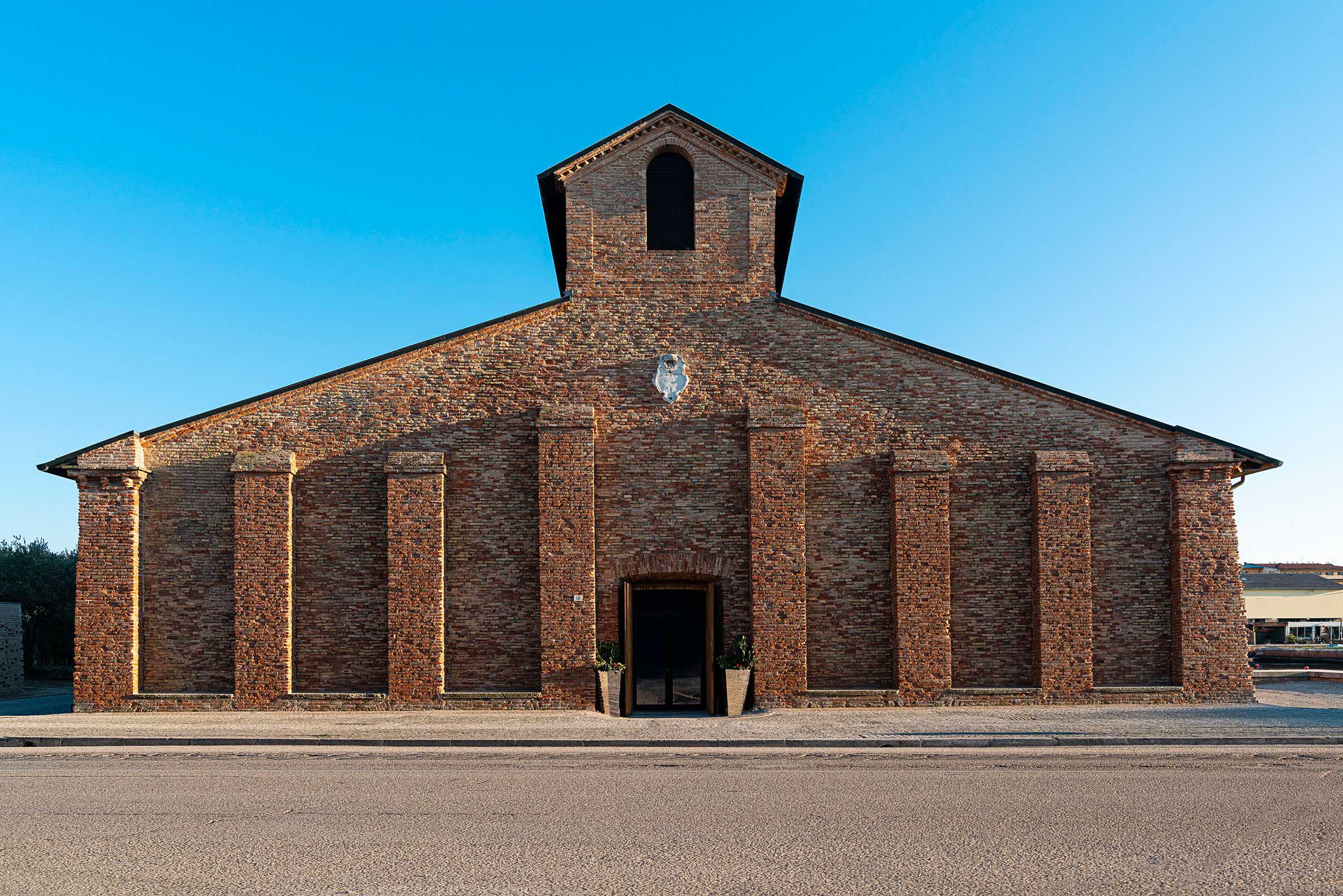Architizer's new image-heavy daily newsletter, The Plug, is easy on the eyes, giving readers a quick jolt of inspiration to supercharge their days. Plug in to the latest design discussions by subscribing.
In mid-2021, contemporary artist Krista Kim sold “Mars House” on the SuperRare platform for 288 ETH. (For the cryptocurrency illiterate among us, that’s Ethereum, and it’s worth about half a million dollars to you and me.) The thing is, “Mars House” doesn’t exist, not in the typical, well-understood sense of a house existing anyway. No one built it; you can’t touch it or live in it. You would definitely struggle to take a summer vacation there. “Mars House” is an NFT.
Virtual walk-through of Mars House NFT by Krista Kim, Video provided by Krista Kim
NFTs have been dominating news streams for a minute. Even our beloved Pantone got stuck into the hype with their NFT exhibition and collaboration from 2022. They teamed up with Parisian multidisciplinary artist Polygon1993 to create an NFT for their annual color selection. Yet, if, like many, despite all the coverage, you can’t quite wrap your head around the specifics of what precisely an NFT is, then allow me to explain —I promise I’ll be brief.
An acronym for Non-Fungible Token, NFT doesn’t refer to any particular object or category of item; it’s not always an artwork, an image, a video or a song. Instead, NFTs are defined by the ownership process of an asset — that asset is most commonly some form of digital creation. The digital markers on “the creation” make it unique, giving it its title of Non-Fungible.

Example of Unique NFT by Artist Polygon1993 for Pantone 2022
Each NFT is certified through something called a smart contract or digital certificate. These certificates are obtained through an often criticized environmentally degradating process called mining (not the kind your grandad used to do, but problematic from a resource perspective nonetheless). Smart contracts record NFT transactions on “The Blockchain” with the blockchain being, in simple terms, a digital ledger that records the exchange of cryptocurrencies between asset collectors; this includes Bitcoin and Ether. NFT transactions and the data surrounding the transfer of the assets (the NFTs) are also recorded here. Much like when you buy and sell a car, except with the information on the blockchain, you can 100 percent guarantee that no one has modified the log book.
Mars House was one of the early examples of architectural NFTs attracting global attention and, most notably, proving without a doubt that NFTs can make architects huge profits. With that, architects and designers are beginning to explore where NFTs belong in their practice.
As we are all keenly aware, architecture has become increasingly digitalized, and in fact, a majority of design and development work is undertaken on digital platforms. Enormous amounts of time and effort are spent designing BIM families, and money is regularly made from charging for the rights to download resources. These everyday processes unearth a myriad of copyright issues. Who owns the item, the original designer, the person who developed the model or the person who paid for the model?

Image of Mars House by Krista Kim, Image provided by Krista KIm
NFTs are being seen as an option to make things crystal clear. Because NFTs record their buyers in a way that is unalterable, assets that could otherwise be infinitely duplicated (right click, save to desktop, post as your own or use however you feel like it) now come with, like a painting, a recognizable title of ownership and a transaction record that can be easily verified. As a result, digital artists and designers can capture the value of their work indefinitely.
The NFT process becomes particularly useful in safeguarding furniture and product designs. Designers and architects who undertake this kind of work can spend years digitally designing and developing a product, yet once the piece is launched, a second party adept at modeling can make a profit from duplicating your design, ultimately devaluing the entire creative process. However, in the case of NFTs, when a digital file is minted as an NFT, the creator of said NFT can set not just the selling price of the digital file but also any additional terms such as royalties or a commission when it is, duplicated or resold. As a result, the original creator can generate a long-term source of income by gaining royalties against the idea itself.

Vignelli Rocker by Lella & Massimo Vignelli, 2014 for Heller, Image use approved by
American furniture brand Heller partnered with technology company Digby to do that. The well-established design firm has launched an online tool that establishes the authenticity of a physical product by using the blockchain to record its lifespan from inception to purchase.
Named Digby Design Authenticator, the system allows designers and brands to link each of their products to an NFT, which associates the assigned digital certificate of authenticity to the product or design. The first product to use the DDA system was Heller’s Vignelli Rocker. The plastic rocking chair is the design of the ultimate creative power couple Lella Vignelli and late husband, Massimo Vignelli. The chair was first produced in 2014.
Discussing the new technology Heller President and CEO John Edelman said, “We’re thrilled to be the first to launch the Digby Design Authenticator with Heller’s Vignelli Rocker.
Partnering with Digby on the first-ever product to use, the Design Authenticator means Heller can guarantee the authenticity of every Vignelli rocker and make sure that each piece is fully recyclable at any time in its lifecycle. With a trackable, unchangeable blockchain-based certificate of authenticity, we’re creating a bridge between us and our customers to take the next step in our closed-loop sustainability program.”
While copyright and design integrity plays a significant role in the enthusiasm for NFTs, Heller also sees the value in having a complete transaction history of their products beyond proving the chair’s authenticity. By making a product’s history fully traceable, the furniture giant hopes that the tool will aid in the longstanding ambition for transparent and purposeful product recycling by keeping track of products throughout their lifespan and orchestrating ways to help customers redistribute or repurpose their unwanted furniture pieces.

A Life Extraordinary, Hortensia Armchair by Andrés Reisinger and Júlia Esqué Image provided by Moooi
Waste saving appears to be a huge and practical benefit of NFTs. Meanwhile, where previously designs have been held under lock and key to safeguard their innovation, by employing NFTs early in the design process, designers can develop and share as they go along, allowing them to register interest and understand the demand for their product. This goes a long way toward eventually reducing mass production and only manufacturing what is needed or wanted.
The Hortensia armchair designed by Andrés Reisinger was first posted online in 2018, beginning its life as an “impossible to manufacture” digital masterpiece and one element in the first wave of NFTs. Yet on the release of the design into the world, the once un-manufacturable virtual armchair was successfully brought to life thanks to a partnership with well-known furniture manufacturers Moooi and skilled product designer Júlia Esqué.
While NFTs are marketed as the savior of creative integrity, there are without doubt many issues with NFTs as they stand, and their implementation into architectural practice can leave a few morality questions looming. The environmental factor of the energy it takes to mine NFTs is understandably being widely discussed. However, as new blockchain technology promises to break away from the energy-intensive past practices, many people believe that the teething issues experienced in the new market that raise concerns will quickly be resolved due to the value that such modern-day practices can bring to the global industry of design and architecture.
Additionally, some arguments bring to light that NFTs claim to counteract duplication and promote uniqueness; however, there is some apprehension that NFTs will encourage a surge in budget architecture, much like the clothing industry in “fast fashion”. The result being that we would see the same building over and over again if the architect who designed it made it cheap enough to buy and allowed unrestrained duplications.
Understandably, as NFTs gain more traction, as with all capitalist endeavors, someone will adopt any model for making money quickly and easily, so it’s likely that downloadable budget architecture will exist somewhere along the line. However, I’d argue that the current system is already subjugated to this type of practice. Swathes of housing development companies design buildings to be replicated off book millions of times across every country in the world.
Oftentimes these designs are unimaginative and poorly designed, with no consideration for location, leaving entire towns without character and a plethora of poorly designed homes. It is my hope, and the hope of many NFT enthusiasts, that access to a broader range of architectural designs will allow non-architects and design novices to explore what is possible by having options they can review digitally and without limit. Such a system will give people more choice — and choice is never a bad thing, in my opinion.
Top photo: Image of #001 Isola NFT Architecture by AUREAL, available on opensea.io Image provided by AUREAL
Architizer's new image-heavy daily newsletter, The Plug, is easy on the eyes, giving readers a quick jolt of inspiration to supercharge their days. Plug in to the latest design discussions by subscribing.










